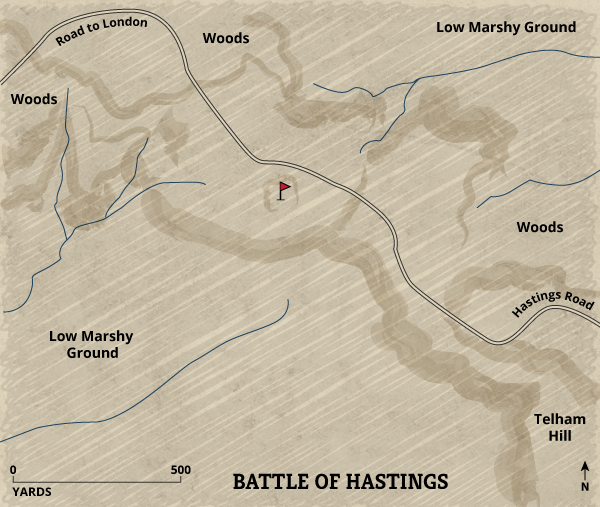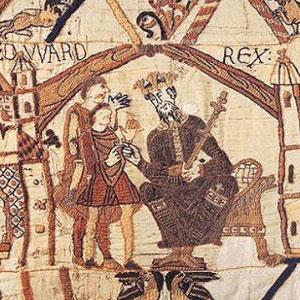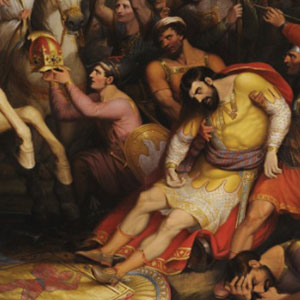Activity 5
How would you plan the Battle of Hastings?
The plan
By the evening of 13 October 1066, the English and Norman armies were encamped within sight of each other at the place now known simply as Battle. Duke William of Normandy had had plenty of time to prepare his forces since landing at Pevensey over two weeks earlier.
An invader in hostile territory, William’s intention was to force a decisive battle with Harold. Harold, by contrast, had just won a hard-fought battle at Stamford Bridge, near York, where he had defeated another claimant to the English throne, Harald Hardrada, King of Norway, on 25 September. When the news of William’s landing reached Harold, he rushed the nucleus of his battle-weary army back south, stopping only briefly in London to gather any extra forces he could.
Your Task
Read Source A and decide which points might be an advantage for King Harold going into battle and which might be disadvantageous.
Answer the questions below on screen or in this Word Doc version to save your answers.
Source A: Relevant factors to consider
Factors to consider |
Advantage |
Disadvantage |
| King Harold knew that the Normans were getting ready to invade. | ||
| His brother Tostig, joining with the King of Norway, invades England to seize the throne from Harold. Harold marches his army north and defeats the Viking force and kills his brother. | ||
| Harold now hears of William’s arrival and has to march his army 400km south (12 days) to ready for battle. | ||
| Harold arrives at Hastings with no cavalry and just a few archers but expects reinforcements to arrive. | ||
| Harold gets to the battle ground first and secures the high ground. |
Source B: The map
Look carefully at the Google map. Although the environment has changed over time consider the geography of the area. Where would you position your forces?
Even if you already know who won the battle, choose a side purely based on the preceding and the following evidence.
Source C: The Armies
William’s Force |
Soldiers |
Infantry |
Amour |
Cavalry |
Harold’s Force |
Soldiers |
Housecarls |
Amour |
Fyrd |
Source D: Battle of Hasting Map
Now drag and drop the forces on the map to see where they were finally positioned for battle.
Battle of Hastings
October 14, 1066
LEGEND:
 Harold's Troops
Harold's Troops
William's Archers
William's Infantry
William's Calvary








